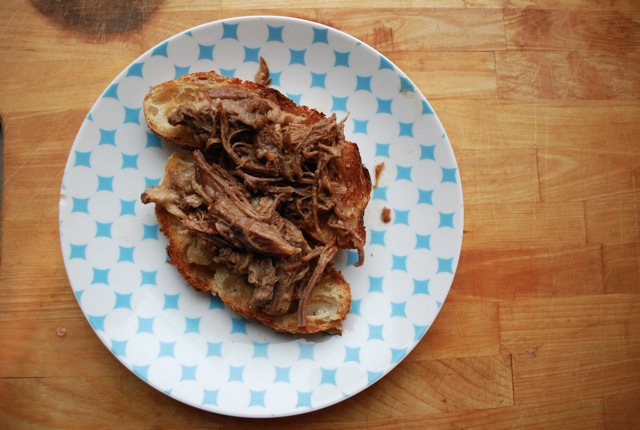
primary-image, l
(post, Elizabeth Stark)

primary-image, l
Like spring, summer, and fall, winter is an excellent season for braised pork shoulder. In the past, my braised pork shoulder has involved canned tomatoes, but you know those tomato cans are lined with BPA and the acid in the tomatoes really eats away at that stuff, so when you eat canned tomatoes you get a good amount of plastic in your food, and you don't want that. So, here's a pork braise recipe that you can make with winter ingredients. It tastes good. Winter Pork Braise 2 lbs boneless pork shoulder 1 cup dry white wine 3 cloves garlic, diced 1 tsp. hot paprika 2 tbsp. honey salt pepper Season the pork with salt and pepper. In a deep heavy-bottomed pan that has a lid, brown the pork on high heat on all sides. Turn the heat down to medium, add the garlic, after about a minute, add the wine, paprika, honey, and a little more salt and pepper. Bring the liquid to a boil, then turn the heat as low as it goes, and cover the pan. Every half-hour or so, flip the pork shoulder. If the liquid is getting low, add a little more wine or water. Taste the braising liquid and adjust the seasoning if you need to. I'm not sure why and maybe this is a commonly known paprika fact, but I find that the paprika makes the braising liquid taste a lot more spicy than it ends up tasting in the final dish, but if you find it's too spicy, add a little more honey or some sugar. Cook until the shoulder is falling apart (at least 3 hours, more if you have time). Using tongs and a fork, shred the shoulder, and let it cook in the braising liquid another 15-20 minutes. Serve over bread, rice, or corn grits (known to some as polenta) with the braising liquid.